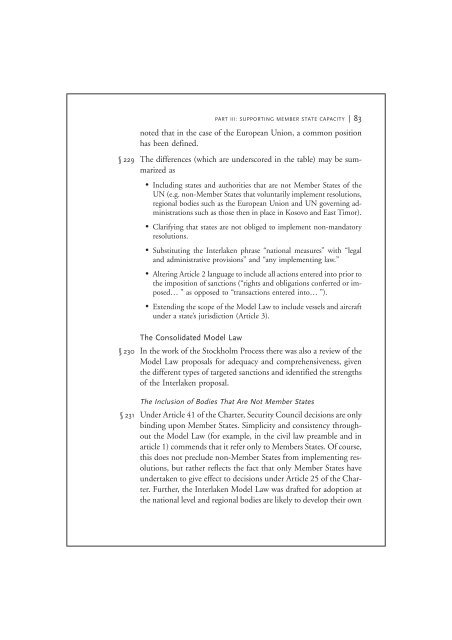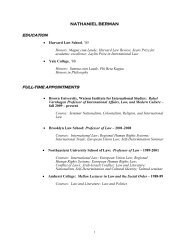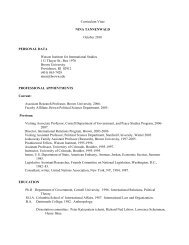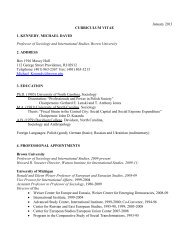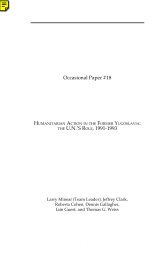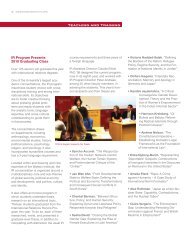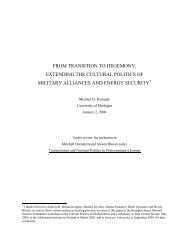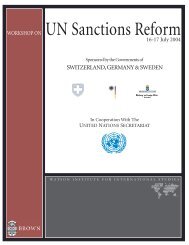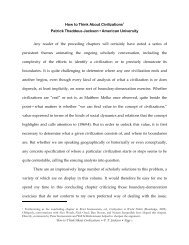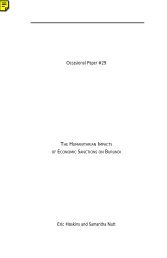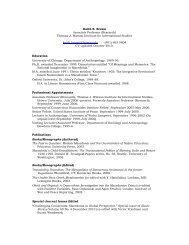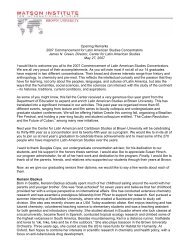Making Targeted Sanctions Effective - Small Arms Survey
Making Targeted Sanctions Effective - Small Arms Survey
Making Targeted Sanctions Effective - Small Arms Survey
You also want an ePaper? Increase the reach of your titles
YUMPU automatically turns print PDFs into web optimized ePapers that Google loves.
§ 229<br />
§ 230<br />
PART III: SUPPORTING MEMBER STATE CAPACITY | 83<br />
noted that in the case of the European Union, a common position<br />
has been defined.<br />
The differences (which are underscored in the table) may be summarized<br />
as<br />
• Including states and authorities that are not Member States of the<br />
UN (e.g. non-Member States that voluntarily implement resolutions,<br />
regional bodies such as the European Union and UN governing administrations<br />
such as those then in place in Kosovo and East Timor).<br />
• Clarifying that states are not obliged to implement non-mandatory<br />
resolutions.<br />
• Substituting the Interlaken phrase “national measures” with “legal<br />
and administrative provisions” and “any implementing law.”<br />
• Altering Article 2 language to include all actions entered into prior to<br />
the imposition of sanctions (“rights and obligations conferred or imposed…<br />
” as opposed to “transactions entered into… ”).<br />
• Extending the scope of the Model Law to include vessels and aircraft<br />
under a state’s jurisdiction (Article 3).<br />
The Consolidated Model Law<br />
In the work of the Stockholm Process there was also a review of the<br />
Model Law proposals for adequacy and comprehensiveness, given<br />
the different types of targeted sanctions and identified the strengths<br />
of the Interlaken proposal.<br />
The Inclusion of Bodies That Are Not Member States<br />
§ 231 Under Article 41 of the Charter, Security Council decisions are only<br />
binding upon Member States. Simplicity and consistency throughout<br />
the Model Law (for example, in the civil law preamble and in<br />
article 1) commends that it refer only to Members States. Of course,<br />
this does not preclude non-Member States from implementing resolutions,<br />
but rather reflects the fact that only Member States have<br />
undertaken to give effect to decisions under Article 25 of the Charter.<br />
Further, the Interlaken Model Law was drafted for adoption at<br />
the national level and regional bodies are likely to develop their own


